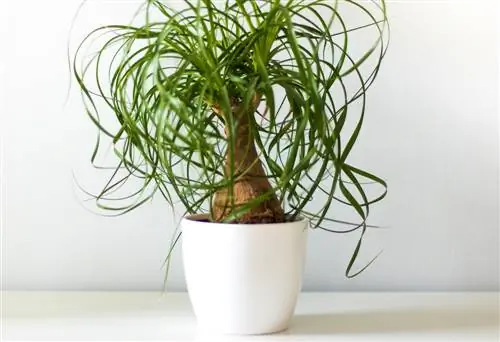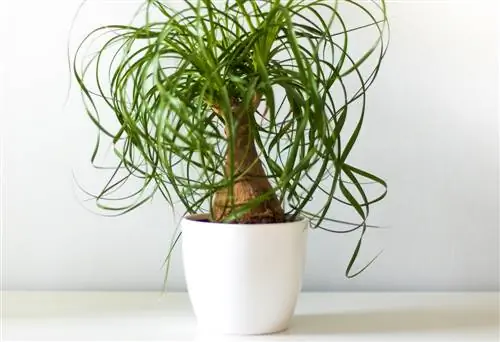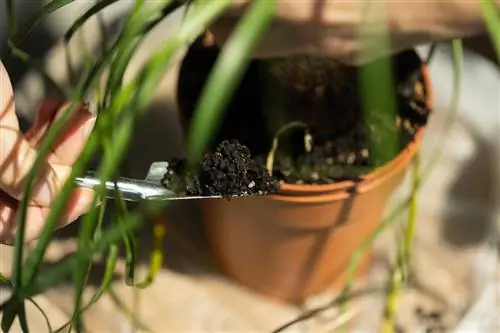- Author admin [email protected].
- Public 2023-12-16 16:46.
- Last modified 2025-01-23 11:22.
In nature, the elephant's foot, which comes from the Mexican area, grows up to nine meters high. Of course it won't reach this size in a living room, but it can still be too big for the windowsill.

Can I saw off my elephant foot?
When sawing off the elephant's foot, you should use a clean and sharp saw, close large wounds and then reduce watering and fertilizing for the time being. New shoots usually form at the interface. Make sure to adapt care to changing water and nutrient needs.
If your elephant foot actually gets too big, then you can actually cut the tree and prune it to a size that is comfortable for you. However, before you reach for the saw, you should keep in mind that it will take some time until the elephant's foot reaches a similar size again.
How fast does an elephant tree actually grow?
The elephant's foot is one of the very slow-growing houseplants. It grows to around one and a half to two meters tall. However, this takes around 20 years. This also explains why a 50 to 60 centimeter elephant foot is significantly more expensive than a mini plant.
What should I pay attention to when sawing?
If you saw off your elephant's foot, several (usually two to three) new shoots will usually form at the cut point. To ensure that no pathogens can penetrate the possibly large cutting or sawing surface, you should definitely use well-cleaned and sharpened tools and close the wound.
Does the sawed off elephant foot need special care?
Depending on how much you have shortened your elephant's foot, the plant's water and nutrient needs can change significantly. The evaporation of moisture occurs through the leaves. The fewer leaves there are after cutting, the less water the elephant's foot needs. It also stores water and nutrients in its thick trunk.
Therefore, be sure to limit watering and fertilizing after cutting off the elephant's foot. If you don't do this, there is a risk of waterlogging and, in the worst case, a softening of the trunk and root rot.
The most important things in brief:
- caps allowed
- clean and sharp saw used
- close large wounds
- water less for now and don't fertilize
Tip
If you want to do something good for your newly trimmed elephant foot, then be sure to limit watering and fertilizing.






